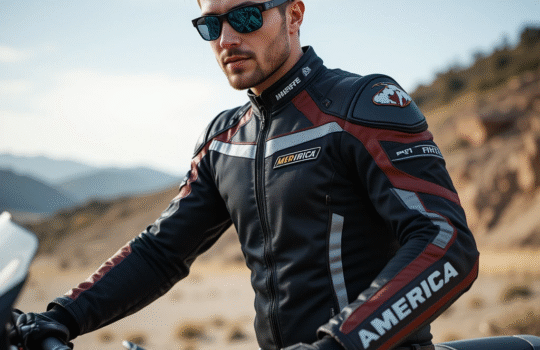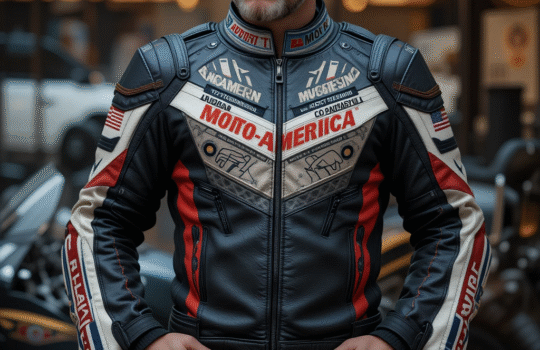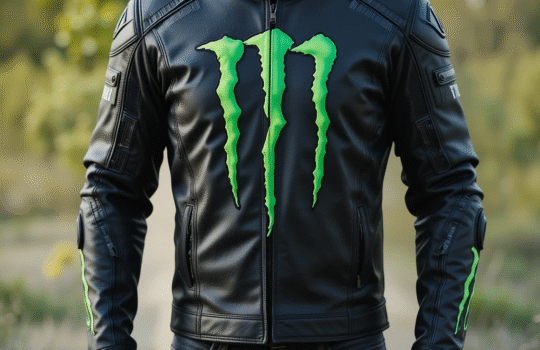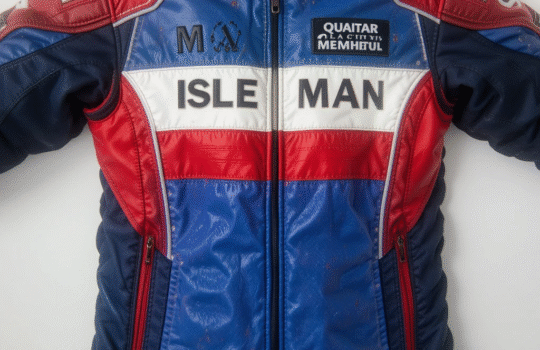The Ultimate Guide to Leather Motorcycle Racing Suits
Introduction
Ever wondered why professional racers and even weekend riders choose leather motorcycle racing suits over anything else? It’s not just about looking cool—though that’s a nice bonus. These suits are like armor for modern-day warriors on two wheels. Whether you’re zooming around a racetrack or cruising down a highway, your safety is everything. And guess what? A leather racing suit could be the difference between walking away from a fall—or not.
Let’s dive into why these suits are a must-have, what to look for when buying one, and how to make sure yours fits like a glove (literally and figuratively).

1. Why Leather for Motorcycle Racing?
When it comes to racing, leather is king. Why? Because it offers unmatched abrasion resistance. Imagine sliding across the pavement at high speed—would you trust anything less than the toughest material? Leather, especially cowhide or kangaroo leather, acts like a shield, preventing road rash and serious injuries.
Plus, leather molds to your body over time. Think of it like a second skin that gets more comfortable the more you wear it. That’s something synthetic materials just can’t match.
2. Key Features of a Quality Racing Suit
Not all suits are created equal. A quality leather motorcycle racing suit should include:
- CE-rated armor in shoulders, elbows, and knees.
- Reinforced stitching for durability.
- Stretch panels for flexibility.
- Aerodynamic hump on the back for high-speed stability.
- Knee sliders for track use.
If a suit doesn’t have these, you’re not getting the best protection.
3. One-Piece vs Two-Piece Suits: Which is Better?
One-piece suits are designed for racing. They’re snug, secure, and have fewer seams—meaning fewer weak spots during a crash.
Two-piece suits are more versatile, especially for casual riders. They offer convenience—you can take the jacket off when you stop for coffee!
Bottom line: Go for one-piece if you’re hitting the track; two-piece for everyday riding.
4. Fit and Comfort: Finding Your Perfect Match
Ever worn shoes that don’t fit? Now imagine that feeling all over your body. Yikes! Fit is crucial. A suit should be snug but not restrictive. Look for:
- Pre-curved arms and legs for a natural riding position.
- Adjustable waist and cuffs.
- Inner liners for added comfort.
Try before you buy—or at least double-check sizing charts if shopping online.
5. Safety First: How Leather Suits Protect You
Here’s the real deal: leather racing suits save lives. They’re built to:
- Absorb impact with built-in armor.
- Prevent road rash with thick, tough leather.
- Hold together during slides, thanks to reinforced stitching and panels.
Think of it like a superhero costume—but for real-life heroes on bikes.
6. Ventilation and Weather Protection
Riding in summer heat? Leather can get hot—unless your suit has ventilation panels. Look for:
- Perforated leather sections.
- Zippered vents.
- Moisture-wicking liners.
For colder weather, some suits offer removable thermal liners or are designed to fit over base layers. Riding should be comfortable, rain or shine.
7. Top Brands to Consider
Here are some trusted brands that deliver top-quality suits:
- Alpinestars – Known for innovation and pro-level gear.
- Dainese – Italian craftsmanship meets racing technology.
- REV’IT! – Great balance of price and performance.
- RST – Affordable but reliable options.
- Spidi – High-end suits with excellent protection.
Each brand has different fits and features, so explore and compare.
8. Customization: Make It Yours
Want to stand out on the track? Custom suits let you pick colors, logos, and even fit preferences. Some companies offer made-to-measure suits, which are ideal if off-the-rack sizes don’t work for you.
It’s like tailoring a tuxedo—but for racing. Bonus: custom suits often offer better comfort and mobility.
9. Leather vs Textile: Pros and Cons
Let’s compare:
| Feature | Leather | Textile |
|---|---|---|
| Protection | Superior | Moderate |
| Comfort | Breaks in | Often softer |
| Price | Higher | Lower |
| Weatherproof | Needs treatment | Often waterproof |
| Longevity | Long-lasting | Varies |
Conclusion? Leather is the go-to for racers. Textile suits are fine for commuting or touring.
10. Maintenance: Keeping Your Suit in Top Shape
Leather needs TLC—tender loving care. Here’s how:
- Clean gently with damp cloth or leather cleaner.
- Condition every few months to prevent cracking.
- Air dry only—never use heat.
- Store properly—on a wide hanger, in a cool, dry place.
Take care of your suit, and it’ll take care of you.
11. Cost Breakdown: What to Expect
Prices range from $500 to $2,000+, depending on brand, materials, and features. Here’s a rough guide:
- Entry-level: $500-$800 (basic protection, fewer features)
- Mid-range: $800-$1,200 (better fit, more armor)
- High-end: $1,200+ (pro-grade, custom fit)
Remember, it’s an investment in your safety.
12. How to Break In a New Leather Suit
New leather can feel stiff. Here’s how to soften it up:
- Wear it around the house (yes, really).
- Ride short distances to loosen it up.
- Use leather conditioner to speed up the process.
After a few rides, it’ll feel like it was made just for you.
13. Legal and Racing Requirements
Some tracks and events require specific gear, like:
- CE-certified armor.
- One-piece suits only.
- Back protectors.
Check local laws too—some countries have minimum safety standards for motorcycle gear.

14. Common Mistakes to Avoid
Don’t fall into these traps:
- Buying too big—leather stretches.
- Skipping armor upgrades.
- Ignoring maintenance.
- Choosing style over safety.
Always prioritize protection over looks. But luckily, you can have both!
15. Final Thoughts: Is It Worth It?
In short—absolutely. A leather motorcycle racing suit is more than just gear—it’s your lifeline. Sure, it costs more upfront. But can you really put a price on your safety, comfort, and peace of mind?
So whether you’re a weekend warrior or track-day enthusiast, investing in a leather suit is one of the smartest decisions you can make.
Frequently Asked Questions (FAQs)
1. Are leather motorcycle racing suits waterproof?
No, leather isn’t naturally waterproof, but many suits come with water-resistant treatments or include rain covers.
2. How long does a leather racing suit last?
With proper care, a quality suit can last 5–10 years or more, depending on usage.
3. Can I wear a leather racing suit for daily commuting?
Yes, especially two-piece suits, but they might be less comfortable in hot weather or stop-and-go traffic.
4. Do all leather suits come with armor?
Most do, but always check for CE-rated armor and consider upgrading if needed.
5. What’s the difference between cowhide and kangaroo leather suits?
Kangaroo leather is lighter and more flexible, while cowhide is thicker and more affordable.
Read more: How to Choose the Right Motorcycle Suit





